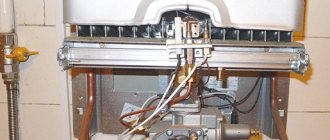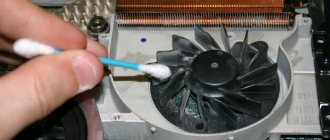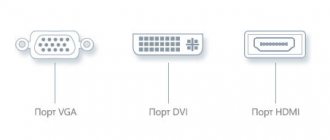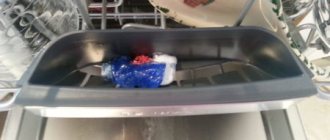Purpose
A blender is an electrical appliance that is endowed with many functions that can make a housewife’s life easier and make her stay in the kitchen enjoyable.
In particular, the blender is used for:
- mixing products;
- whipping;
- grinding.
Using this household appliance, it is easy to prepare purees and mousses, whip cream or crack ice, and chop nuts or hard foods. Cooking now becomes an exciting process with many possibilities.
Important! Depending on the tasks at hand, you need to choose the power of the blender. There are low-power units that can only prepare baby purees from soft foods, as well as super-powerful ones for equipping bars. Something in between is just right for solving everyday household problems.
Care
Caring for the device means that after finishing processing of the products, there should be no food particles remaining in the blender that could interfere with the correct operation of the device. To avoid this, the grinding element must be disassembled and cleaned of food residues. Plastic parts can be washed by hand, while metal parts can be placed in the dishwasher. Before the next use, the parts must be dried to avoid mold, bacteria and rust.
Kinds
Depending on the nature of the work, there are only two types of blenders: submersible and stationary.
A submersible is an electrical appliance, the control of which is located on the handle. Various attachments are attached to it. There is also a special bowl or several in which it is convenient to mix and grind. An important advantage is the ability to use it in any dish with high sides. It is also easy to clean. The stationary device is equipped with a volumetric bowl and a nozzle, which is immersed inside the bowl space and mixes products. The controls are usually located on the body. To prepare mixtures, the products must be poured into this bowl. Cleaning such a device is not very convenient, but they have more power than immersion blenders.
Immersion blender: what it is and how it works
An immersion blender is used as a unit designed for grinding products and mixing them. This type of device is intended for short-term use, and its safety is ensured by the fact that it only works when the button is pressed. Many models have removable parts that are dishwasher safe.
Features
An immersion blender is an excellent device designed for making purees, crushing, mixing, grinding products, as well as for preparing soups, milkshakes, sauces, and baby food. The handle of the device contains a powerful electric motor that drives the knives. The motor operates at 10-12 thousand revolutions per minute, and some models can boast a speed of 20 thousand revolutions. At the moment, immersion blenders are also available in a cordless version. All this is achievable thanks to the emergence of new battery technologies. These devices run on powerful lithium-ion batteries, making blenders convenient and easy to use.
Principle of operation
Working with a device like a blender is not at all difficult. You hold it in your hand while working. At the bottom of the handle there is a kneading mechanism equipped with cutting knives that rotate. They are the ones who crush the food. It is worth remembering that not every immersion blender is suitable for working with hot products. Typically, the operating instructions for the device indicate the maximum temperature of the products at which they can be crushed or mixed. For hot foods and liquids, only a hand blender with an immersion part made of stainless steel is suitable. The disadvantage of such devices is that they are only suitable for short-term use. With their help, you will not be able to chop or mix large quantities of products. However, the power is quite enough for home use. In addition, an immersion blender takes up very little space in the kitchen.
Varieties
There are models equipped with short and long kneading parts, they are designed to work with containers of different depths. As standard, the blender is one device. Some models may come with additional accessories, for example, juice filters, chopping knives, ice knives, and mixing containers. Sometimes even spare parts for a blender may be present, but this is an extremely rare case.
Care
The device turns on when you press the start button, and works while it is pressed. If you remove your finger from it, the blender will turn off. This operating principle allows for maximum safety of the unit. It is worth saying that plastic parts do not need frequent cleaning, but metal parts must be constantly processed. Plastic ones can only be rinsed under running water. The immersion part, made of stainless steel, can be washed in the dishwasher without any problems. Everything else is described in the operating instructions. Immersion blenders are produced by many companies, but the most popular products are from companies such as Vitek and Brown.
Blender device
Typically, an immersion blender has three attachments.
The main one is a stainless steel nozzle with sharp knives. It is capable of chopping and pureeing foods. The second is a whisk, with which you can easily beat the dough for pancakes or pancakes. The third is a separate bowl with a closed lid, on which an electrical appliance is installed, this is a chopper. You can easily make minced meat or crush ice with it. The immersion blender also comes with a tall measuring cup made of glass or plastic, which is convenient to work with. Stand-up blenders usually only have a couple of attachments for whisking and mixing. The shredding function is provided only in professional models.
Comparison
Comparing devices according to a number of parameters, for example, power and speed, will allow you to understand what the difference is between an immersion and stationary blender, and also decide which one is optimal for the needs of the future owner.
Power
The power of an immersion blender is lower than that of a stationary blender. For equipment of the first type, this parameter does not exceed 1700 W; such devices cope well with preparing puree soup, baby food, whipping batter, cream, chopping herbs, boiled meat, cheese and other non-solid ingredients. Stationary gadgets have a power of up to 3500 W. They qualitatively grind nuts, sugar and other solid products, crush ice, and also prepare smoothies and cocktails.
The higher the value of this indicator, the more functional and productive the blender will be. If low-power immersion devices can perform some tasks, for example, making baby food, then a weak stationary blender is likely to be a waste of money.
Speed and modes
The number of speeds on both types of blenders can vary from 1-2 to 20 or higher. This allows you to select the optimal speed for different tasks. For example, mixing or shaking does not require maximum engine operation, unlike chopping meat or cheese.
Switching between speeds is usually stepwise or smooth, performed with buttons or a regulator on the body. On some submersible models, to adjust, you just need to press the power button harder or weaker.
The operating modes usually found are as follows:
- turbo mode (the device operates at maximum power for more efficient cooking, for example, uniformly chopping products or whipping airy cream);
- pulse mode (for crushing ice, crushing crackers, as well as controlling the process - the device stops if the button is released, so the user can examine the contents of the container).
Advanced stationary blenders have separate modes for cocktails and smoothies, crushing ice, foaming and others, depending on the model and manufacturer. For each of them, the optimal power and operating time are selected to achieve the best result.
Stationary equipment often has a self-cleaning function, which makes cleaning the jug much easier, especially with a non-removable blade.
Nozzles and equipment
The equipment is an important difference between an immersion blender and a stationary one. The second type of device usually comes with one cooking bowl. Equipment of the first type, with the exception of budget models, has a large number of different attachments and accessories.
| Equipment | |
| Submersible | Stationary |
|
|
Material of body and nozzles
The body of both types of blenders can be plastic or metal. The first option is cheaper, the second is more expensive, has more weight, but looks stylish and is more practical to use.
The attachments of immersion blenders are also plastic or made of stainless steel. The latter are more durable, are not afraid of shocks and falls, are easy to clean, and are suitable for processing hot products. The performance properties of the first type of nozzles are much lower. Over time, plastic changes color, gets scratched, becomes deformed, and its particles can get into food.
Wire/battery
Stationary blenders work only from the mains. Some submersibles are powered by a battery. Such devices are more autonomous, but have the disadvantage of being heavy. Therefore, if you need to work with the device constantly, it is better to purchase a wired unit, otherwise your hand will get very tired. In addition, the battery capacity of such devices is usually small.
Bowl volume and material
Stationary blenders are equipped with a glass, plastic or metal bowl.
| Glass | Metal | Plastic |
Pros:
| Pros:
Minuses:
| Pros:
Minuses:
|
Immersion blenders do not come with a special bowl and work in any container. The measuring cup and chopper that come with the device are usually plastic.
The volume of the jug in stationary blenders varies from 0.4 to 3 liters. A liter bowl is enough to prepare baby food. Lovers of cocktails and pureed soups, as well as large families, are advised to purchase a jug with a capacity of 2-3 liters. The bowl should not be filled completely; taking this into account, you should choose a larger device than originally planned.
Additional features
When purchasing blenders, not only their key characteristics are important, but also additional features, because they can make the operation of the equipment more comfortable.
For submersible devices, the following are important:
- wall mount. Allows you to conveniently store the device and not take up extra space in the closet;
- anti-slip coating. If it is present, the blender fits comfortably in your hand and will not fall out during operation;
- several knives in the main leg, bent at different angles. This will ensure better mixing and chopping of the products.
In stationary blenders you need to consider:
- shape of knives. In jugs of such models, the knives have two or four blades. Moreover, they can be straight or curved at the same or different angles. It is recommended to choose a technique with a large number of knives directed in different directions. This ensures better processing of the food and that there are no areas in the bowls that the blades cannot grip;
- hole in the lid of the bowl. Allows you to add ingredients during operation without wasting time turning off and disassembling the device;
- bowl spout and tap for pouring cocktails;
- Rubberized feet prevent the device from slipping and provide stability during operation.
In addition, both types of equipment must be protected from possible overheating.
How to use?
The scheme for using both types of blender is very simple.
The products are washed and crushed into large fractions, then they are poured into a bowl and the blender with the appropriate attachment on it is lowered. The main thing is to provide for the power of the device and not to add products that it obviously cannot chop. Always read the device specifications. After use, remove the attachments and rinse thoroughly under running water. You should not leave a dirty device for a long time, food residues can dry out and it will be very difficult to wash them. A stationary blender is more difficult to clean, so try to choose a model in which the bowl is easily removable and the attachments can also be removed and washed under running water.
A blender is an extremely useful thing in the household. With its help, you can prepare purees for small children, treat your loved ones with delicious cream soups and desserts made from healthy fruits and berries, and also prepare healthy smoothies for yourself in the morning.










